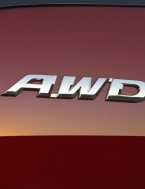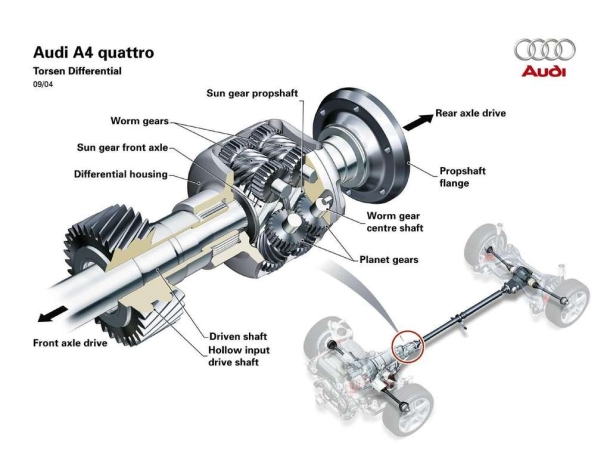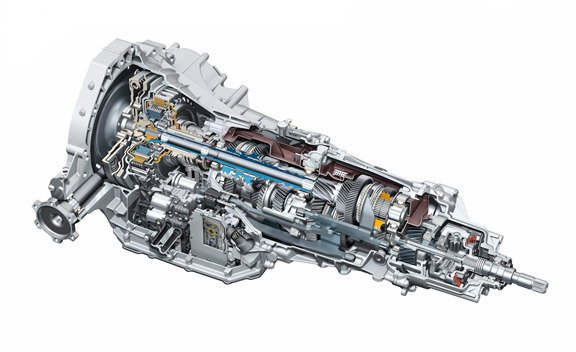
In part 1, we reviewed some basic knowledge of AWD system, BMW xDrive and Mercedes-Benz 4Matic system. Now we continue our discussion on Lexus and Audi.
Lexus: the IS250/350 AWD and GS350 AWD are using a planetary-gear center differential, plus a wet-type multi-disc clutch control to act as slip control. This is a very advanced and complex design. Because the multi-disc clutch can be 100% locked, it means Lexus’ AWD can handle the case that even front or rear wheels completely lose traction, than the rest side of the two wheels still have full power. The disadvantage of this design is it is complicated and the parts take space. Actually the IS/GS AWD are similar to an off road SUV – they have a separate transfer case to enclose the differential and the limit slip clutch unit.
The LS460AWD and LS600hl are different. They use a Torsen-C limited slip center differential. Torsen C is a mechanical device which has the ability to sense the tendency of slipping, before the slippage actually happened, and then mechanically transfer the torque to the wheel that has traction. We can say the Torsen differential is proactive. This system is all mechanical so it acts instantly. On the other hand, Torsen system has its shortcoming too. It cannot be 100% locked, so there are still slippery situations that it is unable to handle. Therefore in Lexus LS, it also borrows help from the car’s ABS system.
Please note that here the clutch control mentioned in the Lexus section is act as limited slip function, it should not be confused with the BMW xDrive’s coupling purpose. They are two totally different things.
Altough with such advanced and sophisticated design, Lexus seldom advertise their AWD system, or claim this is their selling point (I cannot even find an cutaway illustration of the Lexus AWD system). Perhaps Lexus vehicles are so well build that the Lexus management decided it is not necessary to add an extra selling point?
(Image: Audi’s Quattro system with Torsen center differential)
(Image: Audi’s Quattro system with Crown Gear center differential)
Audi: The A3 is using the Haldex system as mentioned in Mercedes-Benz CLA class.
Before 2010, the Audi Quattro system is using a Torsen center differential. Some may not know, Torsen technology is owned by JTEKT, which is a subsidiary of the Toyota Group. So technically speaking, anything that uses Torsen, is actually developed (or licensed from) by Toyota.
Maybe Audi consider the development cost or licensing cost from Toyota is unnecessary, or Audi consider their own invention may be better. Starting from 2010 Audi RS5, they started to use Crown Gear Differential as the center differential, which is developed within the VW group. The crown gear differential has similar functionalities as Torsen. To be simple, you can treat Torsen and crown gear differential are substitution of each other.
One thing should be noted is that, Audi managed to integrate the center differential inside the transmission assembly, without using a separate transfer case like the Lexus. But the tradeoff is it must place the whole engine 100% in front of the front axle, which is exactly a front wheel drive layout. Such layout will cause heavy car nose, not an optimal weight distribution. This is also the reason why some of the Audi cars has front wheel drive version (because it is actually a FWD layout!). To your surprise, in European market the flagship sedan A8 even has a FWD trim available.





“To be simple, you can treat Torsen and crown gear differential are substitution of each other.”
I think that is completely incorrect and needs further research.